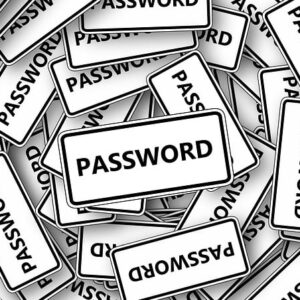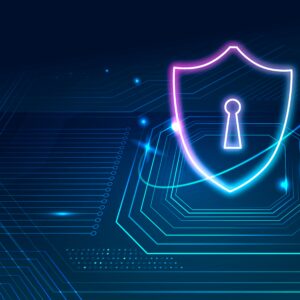
As a small business owner, you know that your business is only as strong as the systems that support it. That’s why it’s so important to take cybersecurity for small business seriously.
A single cyber attack can cause irreparable damage to your business, putting your data, your reputation, and your livelihood at risk. Here are ten cybersecurity tips to help you protect your small business from cyber threats.
Use Strong Passwords
One of the simplest and most effective things you can do to protect your business from cyber threats is to use strong passwords. A strong password is one that is difficult to guess or hack, and that includes a combination of uppercase and lowercase letters, numbers, and symbols. Avoid using easily guessable information such as your name, your birthdate, or your pet’s name as part of your password.
Additionally, it’s important to use unique passwords for each account and to change your passwords regularly. A password manager tool can help you keep track of your passwords and generate strong passwords for you.
Update Software Regularly
Software vulnerabilities are a common entry point for cyber attackers, which is why it’s important to keep your software up to date. Software updates often include security patches that address vulnerabilities and improve overall security.
Make sure to regularly check for updates and install them as soon as they become available. Set automatic updates for your operating system, web browser, and other software applications to ensure that you are always running the latest version.
Back Up Data

Backing up your data regularly is critical in the event of a cyber attack. Ransomware attacks, for example, can encrypt your data and hold it for ransom, making it inaccessible until you pay the attacker. If you have a backup, you can simply restore your data and avoid paying the ransom.
Backing up your data regularly is critical in the event of a cyber attack. Ransomware attacks, for example, can encrypt your data and hold it for ransom, making it inaccessible until you pay the attacker. If you have a backup, you can simply restore your data and avoid paying the ransom.
There are many options for backing up your data, including cloud storage services like Google Drive and Dropbox, external hard drives, and backup software. Make sure to choose a backup solution that fits your needs and that you test your backups regularly to ensure that they are working correctly.
Educate Employees About Cybersecurity

Your employees are your first line of defense against cyber attacks, which is why it’s critical to educate them about cybersecurity best practices. Provide regular training sessions and ongoing communication about cybersecurity to help employees understand the risks and how to avoid them.
Make sure to cover topics like password management, phishing scams, and how to identify suspicious activity. Encourage employees to report any suspicious activity or potential security incidents to you immediately.
Implement Two-Factor Authentication
Two-factor authentication adds an extra layer of security to your login credentials. With two-factor authentication, you need to provide a second form of authentication in addition to your password, such as a fingerprint or a code sent to your phone.
Many online services offer two-factor authentication, including email services, social media platforms, and banking apps. Make sure to enable two-factor authentication for all accounts that support it.
Use Firewalls and Antivirus Software
Firewalls and antivirus software are essential tools for protecting your business from cyber threats. A firewall is a network security system that monitors and controls incoming and outgoing network traffic, while antivirus software is designed to detect and remove malware.
Make sure to choose a reputable firewall and antivirus software provider and to regularly update and scan your systems for malware. Keep in mind that no antivirus software is foolproof, so it’s important to use multiple layers of security.
Secure Wi-Fi Networks

Your Wi-Fi network can be a vulnerable entry point for cyber attackers, which is why it’s important to secure it. Make sure to use a strong, unique password for your Wi-Fi network, and consider using Wi-Fi encryption to prevent unauthorized access.
Additionally, make sure to keep your router firmware up to date and to disable remote administration, which can make your network more vulnerable to attacks.
Avoid Phishing Scams
Phishing scams are a common form of social engineering attack in which cyber attackers use fake emails, websites, and other means to trick users into giving up their personal information. To avoid falling victim to phishing scams, make sure to be cautious of suspicious emails and links, and to verify the authenticity of any requests for personal information.
Make sure to educate your employees about phishing scams and to implement security measures such as email filters and spam blockers to reduce the risk of phishing attacks.
Monitor Systems for Unusual Activity
Monitoring your systems for unusual activity can help you detect and respond to cyber attacks before they cause significant damage. Use monitoring software to keep an eye on your systems for any unusual or suspicious activity, such as changes to system files or unauthorized access attempts.
Make sure to regularly review your logs and to report any suspicious activity to your IT team or cybersecurity provider immediately.
Develop a Cybersecurity Plan

A cybersecurity plan is an essential component of your overall business strategy. A cybersecurity plan outlines your policies and procedures for protecting your data and systems from cyber threats, as well as your response plan in the event of a cyber attack.
Make sure to identify your risks and vulnerabilities, and to set policies for password management, access control, data backup, and incident response. Regularly review and update your cybersecurity plan to ensure that it remains effective and relevant to your business needs.
Conclusion
In conclusion, cyber threats are a serious and ongoing concern for small businesses. By following these ten cybersecurity tips, you can help protect your business from cyber attacks and safeguard your data and systems. Remember to stay vigilant and to regularly review and update your cybersecurity policies and procedures to ensure that your business remains secure.






This Post Has One Comment